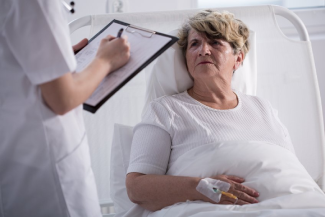Legal Perils and Pitfalls of Wound Care, Part 2: Not Documented, Not Done
November 1, 2018
Part 2 in a multi-part series looking at the basics of avoiding litigation as a health care provider. Read Part 1 Here.
In the last blog, I discussed wound documentation and how it is a very necessary communication tool among wound care providers and also as a record of the care provided. It is used by attorneys to prove whether or not the standards of care have been met in a particular case. Wound documentation needs to be clear, concise, chronological, continuing, and reasonably complete.1 A lofty goal indeed.
Wound Documentation and Litigation
Not Documented, Not Done
Frequently, in the course of legal proceedings, we encounter the phrase, “not documented, not done” in regards to wound care. Plaintiff (and defense attorneys) scour the chart for evidence of the exact care provided as documented in the chart and present what they find as absolute evidence that the facility met the standard of care or not. What is a “standard of care?” There are many definitions, but at its core a standard of care is what any reasonable health care practitioner would do under similar circumstances. If standards of care have been met, then the defendant prevails; if not, then the plaintiff does.
Can the absence or paucity of certain documentations be absolute proof that standards were not met? Can we expect that busy bedside clinicians chart every single action that they take? According to Ayello et al., “Not documented, not done removes the focus from the patient care and puts it on creating ‘perfect paperwork.’”1
Poor Documentation
Poor documentation related to wound care, but not necessarily proof of lack of care, may include turning and positioning, feeding and nutrition measures, the support surface the patient was on (mattress and seating), any refusals of care, when exactly the wound dressing was changed and what was used (ideally charted every time but often not), conversations with physicians and families, patient transfers out of bed, and many other of the myriad actions that bedside nurses and other health care providers perform during the course of their busy day.
Electronic Medical Records
Electronic records, done properly, can be a step forward, prompting health care staff to document their wound care more completely in what is hopefully a more efficient and legible manner. The danger comes (and this applies to paper records, as well as electronic records) when areas on forms are left blank. There is a strong assumption that any blanks are proof that those interventions did not occur. For example, if there is an area for “specialty bed,” make sure it is completed!
Chart Analysis
For instance, when I look at a chart for attorneys, I, too, look for perfect “Turn Q 2 hour” documentation when a patient is at risk or has an existing pressure ulcer. Perfection is rarely found. And even if there are perfect every two-hour documentations, how do we really know these actions were truly performed, or whether staff sat down at the end of the shift and filled in their initials every two hours (i.e., created perfect paperwork but not necessarily performed perfect patient care)? The general answer is that when I look at charts, I am looking for an overall culture of patient care, including turning and positioning. The specifics of that will be explained in future blogs, looking at most specifically turning and positioning, wound and skin assessment, risk assessments, physician and family notifications, nutrition assessments and interventions, management or treatment of skin and wound issues, and pain assessment and treatment. Don’t let this become part of a complaint against you: “Among the duties the defendants and their employees owed to John Doe but failed to perform was the duty to appropriately chart his condition, assessment, care planning, history, and monitoring so as to enhance his progress and well-being.”
Reference
1. Ayello EA, Capitulo KL, Fife CE, et al. Legal issues in the care of pressure ulcer patients: Key concepts for healthcare providers. International Wound Care Advisory Panel. 2009. https://www.medline.com/media/assets/pdf/LegalImplicationsofPressureUlc…. Accessed October 14, 2018.
About the Author
Heidi H. Cross, MSN, RN, FNP-BC, CWON, is a certified Wound and Ostomy Nurse in Syracuse, NY. She has extensive experience caring for wound and ostomy patients in acute care as well as in long term care facilities. Currently, she is employed by CNY Surgical Physicians consulting for nursing homes in the Syracuse area, and has served as an expert witness for plaintiff and defense attorneys.
The views and opinions expressed in this content are solely those of the contributor, and do not represent the views of WoundSource, HMP Global, its affiliates, or subsidiary companies.










